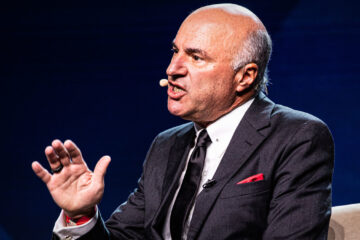The young electric vehicle manufacturer is having difficulty increasing production rates.
The first quarter was brutal for Rivian (RIVN) – Get Rivian Automotive, Inc. Class A Report.
The stock took a beating on Wall Street after the company failed to deliver on its vehicle delivery promises. His difficulties in managing production ramp-ups due to part shortage at its suppliers have made things worse and cast doubt on its future.
To this was added a PR problem born of its decision to increase the prices of its R1T pickups and R1S SUVs without warning and then to cancel this decision in front of the anger of its customers. The episode left traces both for its image and for its finances.
This confusion demonstrated by Rivian had prompted Elon Musk, the CEO of the great rival Tesla (TSLA) – Get Tesla Inc Report, to react.
The billionaire had estimated that giving up raising prices when the cost of raw materials such as nickel, a key element in the development of the battery, had soared, was almost suicidal.
“Their negative gross margin will be staggering,” the tech mogul posted on Twitter on March 1, referring to Rivian’s decision to backtrack price increases.
Rivian
Rivian Is a Growth Company (Says Rivian)
The young electric vehicle manufacturer hopes that the rest of 2022 will be less abrupt. Rivian, which counts Amazon (AMZN) – Get Amazon.com, Inc. Report, Ford (F) – Get Ford Motor Company Report, billionaire George Soros as shareholders, is on Time’s list of the 100 most influential companies.
The company has just launched a plea to convince investors to arm themselves with patience because Rivian is a “growth company”.
“We are a growth stage company with a history of losses and expect to incur significant expenses and continuing losses for the foreseeable future,” the firm wrote in a recent filing with the Securities and Exchange Commission (SEC). “We do not expect to be profitable for the foreseeable future as we invest in our business, build capacity, and ramp up operations, and we cannot assure you that we will ever achieve or be able to maintain profitability in the future.”
Rivian was founded in 2009 and went public in 2021. The company, which produces three vehicles — the R1T electric pickup truck, the R1S electric SUV, and the the RCV electric commercial van — in Normal, Illinois, will soon start building its second production site, east of Atlanta.
It announced a net loss of $2.46 billion in 2021, while its costs increased to $3.75 billion from $1.02 billion in 2020. Negative gross profit was $465 million of which $383 million in the fourth quarter.
Rivian produced only 1,015 vehicles in 2021 while the automotive group had planned to manufacture 1,200. In 2022, it has produced 1,410 vehicles as of March 8. Rivian delivered 929 vehicles in 2021
“Even if we are able to successfully develop our vehicles and attract customers, there can be no assurance that we will be financially successful,” the company warned in its SEC filing. “For example, as we expand our product portfolio, including the introduction of lower-priced vehicles, and expand internationally, we will need to manage costs effectively to sell those products at our expected margins.”
Rivian Has Many Obstacles to Overcome
In 2022, capital expenditures are expected to rise at $2.6 billion, up 45% compared to 2021, “driven by additional investment in our Normal factory to expand the total capacity to 200,000 units annually,” the company said.
“Our initial deliveries for the R1T and R1S were delayed, and our production ramp is taking longer than originally expected due to a number of reasons,” Rivian explained. “The cascading impacts of the Covid-19 pandemic, and more recently the conflict in the Ukraine, have impacted our business and operations from facility construction to equipment installation to vehicle component supply.”
Rivian is continuing the exercise of transparency, the aim of which is to avoid any surprises for investors.
“We have no experience as an organization in high volume manufacturing of EVs, and we do not expect to reach a vehicle production rate, which, when annualized, would result in us using 100% of the facility’s current installed capacity of up to 150,000 vehicles until late 2023,” the company said.
Adding: “There have been very sizable increases in recent months in the cost of key metals, including lithium, nickel, aluminum, and cobalt with volatility in pricing expected to persist for the foreseeable future.” Basically, operating margins will suffer a lot.
And finally, Rivian warns that the group also depends a lot on its suppliers.
“Our products contain thousands of parts that we purchase from hundreds of mostly single- or limited-source suppliers, for which no immediate or readily available alternative supplier exists,” the carmaker said.
The weight of suppliers in Rivian’s production is significant. At the beginning of March, the group had, for example, announced that its Normal factory had the capacity to produce 50,000 vehicles in 2022, but due to difficulties with supply chain, Rivian would only manufacture half of them (25,000).


